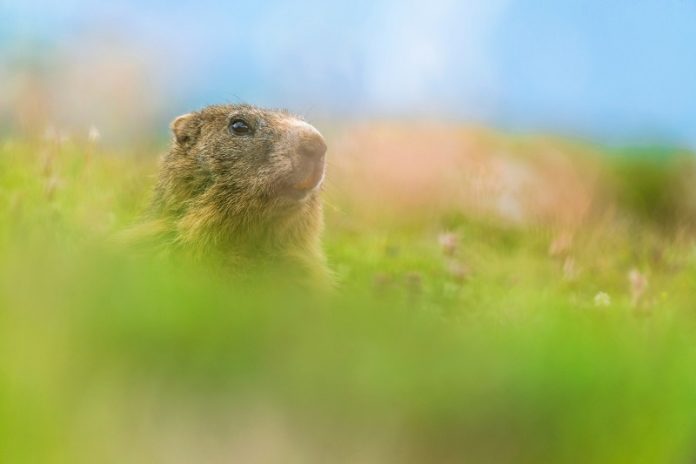
New study reveals secrets of marmot longevity.
Just like humans, animals that face hardships early in life can suffer long-lasting effects on their health and lifespan.
While scientists have long studied how adversity affects people, using a tool called the cumulative adversity index (CAI), little is known about how early life challenges impact wild animals.
Understanding this could help in wildlife conservation efforts, but few animal populations have been studied over a long enough time to gather the necessary data.
Now, biologists from UCLA have developed the first cumulative adversity index for yellow-bellied marmots, thanks to 62 years of continuous data collected at the Rocky Mountain Biological Laboratory in Colorado.
This study, the second-longest of its kind, provides a new way for scientists to understand how early life challenges affect the survival and longevity of these wild animals.
The findings were published in the journal Ecology Letters and offer a roadmap for creating similar indices for other species.
To build the CAI for yellow-bellied marmots, the researchers focused on female marmots born after 2001.
They chose females because, unlike males, they tend to stay in the area where they were born, making it easier to track their entire life experiences.
The study included marmots that lived in two distinct groups, separated by a 984-foot elevation difference. This divide resulted in different environmental and demographic conditions for the up-valley and down-valley groups.
Throughout each marmot’s life, the researchers collected detailed data on various stressors that could affect survival, especially during the critical first year of life.
These stressors included factors like the late start of the growing season, summer drought, predation, the size and gender makeup of litters, the mother’s health, and whether the mother survived after the pup was weaned.
The scientists then fed this data into computer models to quantify the levels of adversity—ranging from mild to acute—and to see how these levels affected the marmots’ survival and lifespan.
The study revealed both expected and surprising results.
For instance, it was no shock that a late start to the growing season reduced survival rates, as marmots need to gain enough weight during summer to survive their long hibernation.
However, the researchers were surprised to find that summer drought had no negative impact on survival. Similarly, predation, which was expected to be a significant factor, played a smaller role than anticipated.
One of the most significant findings was the impact of maternal loss. The death of a mother had a large effect on a pup’s survival chances, even if the mother died after the pup was weaned.
This suggests that the presence of the mother during the first year is crucial for the pup’s development.
Interestingly, the study found that marmots in the up-valley group had better survival odds than those in the down-valley group. However, factors like maternal loss and poor maternal health still significantly reduced survival chances across the board.
Another unexpected result was that drought conditions actually increased survival odds in all but the most severe adversity model. This could suggest that droughts might limit predator populations or reduce competition for food, but more research is needed to understand this fully.
The average lifespan of adult marmots in the study was 3.8 years, but those experiencing the highest levels of early adversity had a much higher risk of a shortened lifespan.
The research confirmed that a CAI is an effective tool for understanding how early life challenges affect the long-term survival of yellow-bellied marmots.
Daniel Blumstein, a co-author of the study, emphasized the importance of this tool for conservation. “We often study one factor at a time, like human impact, predators, or climate change. But these factors interact and have a cumulative effect.
Our research shows that the CAI can help identify which stressors—or combinations of stressors—have the biggest impact on wildlife populations.”
For example, conservation efforts for these marmots might focus on improving maternal health and reducing maternal mortality, particularly in the down-valley group. Surprisingly, reducing predation or countering summer droughts may not be as critical as once thought.
This study not only sheds light on the lives of yellow-bellied marmots but also offers a new tool for conserving wildlife facing multiple challenges in an increasingly complex world.



